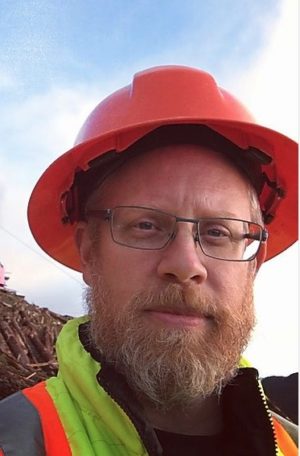
David Elstone
Speaking about paradigm shifts, broad scale concepts do not need to be overcomplicated. Forestry in BC is more than harvesting trees, it is also becoming about wildfire resiliency. At least 8% of the province has burnt in the last decade. As a broad generalization, the future of wildfire management is more than putting fires out but increasingly it is learning how to live with fire. Yes, we will always have forest fires and for many of them there is nothing that could have been done ahead of time to lessen their impact; however, there is evidence there are ways in many areas to mitigate fire’s destructiveness. That happens with active forest management work such as stand thinning and fuel reduction treatments. Specifics of such depend on the ecological characteristics of the areas to receive treatments.
Another reality is that forestry is no longer practiced without First Nations consultation and input. In fact, due to growing forest tenure ownership and now with leadership in forest landscape planning, forestry in BC is fast becoming synonymous with Indigenous forestry. There is one component that must not be discounted. The forest industry serves an economic function but also it provides the physical infrastructure and capacity to receive collected biomass from forest fuel reduction efforts. BC forestry is clearly evolving from an industry centric sector to one that looks like a triangulation of Wildfire Resiliency: Indigenous Forestry: Forest Industry. Failing to acknowledge this new dynamic in BC forestry will likely lead to decisions and policy intentions that will yield results that miss their objectives. We need a healthy industry to live with wildfire and to implement indigenous forestry.
To effectively and urgently treat millions of hectares of forests for resiliency to wildfire, the amount of required funding is magnitudes greater than what is being applied today. At the same time, sawmills, pulp mills, and pellet mills are all desperate for fibre. Unfortunately, over a third of the province’s lumber capacity has disappeared since 2017 along with several pulp mills and pellet mills. At the same time, our forests are in dire need for stand management, both from a silviculture perspective and for wildlife habitat (moose), and for restoration to enhance biodiversity and old growth attributes. Historically, industry and ecological performance have been presented as essentially oppositional activities and outcomes. This view is changing, where both industry and ecological performance can best be achieved through mutually inclusive efforts.
Unfortunately, the reality is governments are not made of money and therefore can only accomplish so much. Even with awareness of the widespread threat to Canadian forests posed by wildfire, the federal government could only muster $58 million to support its Resilient Communities through FirstSmart Program. This was part of a $104 million announcement made on June 12 for funding over the next four to five years. The difference in funding is coming from the various provinces. While this funding is appreciated, it falls short of what is needed to make an impact across our forested landscapes. So here is an idea that does not need government funds, just motivation that brings together the three sides of the triangle as described above:
Create large scale temporary stewardship areas, in the thousands of hectares where there are homogenous forests of an age range – say between 20 years to 40 years old – where qualified operators could thin stands from below, following a broad stand management prescription for the area. Planning work with First Nations should be done in advance for the entire area. Given that this activity will be in younger forests without removing the canopy, it is anticipated that typical concerns will not pose significant obstacles. No tenure, no conventional cutting permit, just an application/timber mark. No appraisal – just say $1/m3 stumpage. Make it so there are no negative repercussions to AAC cut control so existing forest tenure licensees should have no concern. Minimal forest planning expenses, and only major costs associated with harvesting/transportation. Doing this work at scale will drive investment in more efficient equipment. Mills receive steady and reliable fibre to keep operating and maintain jobs. Government and First Nations get more wildfire resilient forested landscapes, raising the quality of forests increases other values like moose, and carbon management etc.
Conventional thinking and approaches (as in relying on government budgets) will only support the notion living with wildfire beyond a few hundred hectares per year. So why not this idea? What is there to really lose?